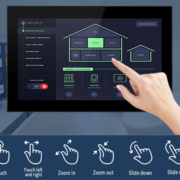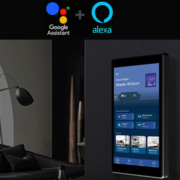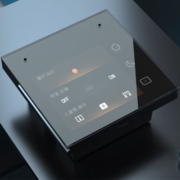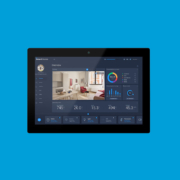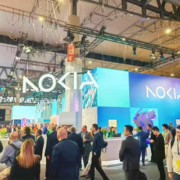What is IoT Dashboard? Is it a smart device control panel?
With the rapid advancement of Internet of Things (IoT) technology, a multitude of smart devices has proliferated into our daily lives and industrial applications. Amid this wave of vigorous development, the efficient management of these numerous and functionally diverse smart devices has become an urgent challenge. The IoT Dashboard has emerged as an indispensable tool for managing smart devices, integrating powerful functions such as centralized device control, data visualization, automated control execution, and real-time remote monitoring. This article delves into the core functionalities and significant advantages of IoT Dashboards, with a special focus on Portworld’s leading products in this field, including Embedded Tablets, Industrial Embedded Touch Screen Monitors, and smart home control panels designed for smart home scenarios.
What is an IoT Dashboard?
An IoT Dashboard is a specialized visual interface for controlling and monitoring smart devices, adeptly integrating real-time sensor data, device operational status, and various control options. Its applications span a wide range of critical domains, including home automation, Industrial IoT (IIoT), energy management, and smart city development, providing robust support for intelligent advancements in these fields.
Core Functions of an IoT Dashboard
Centralized Device Management
IoT Dashboards excel in centralized device management, enabling unified control over smart home systems, industrial automation equipment, smart security systems, and other smart devices. Whether managing household smart appliances or complex automated production line equipment in factories, this platform offers convenient and efficient control, significantly enhancing management efficiency and ease of use.
Data Visualization
Through real-time data charts, precise statistical analyses, and other diverse data presentation methods, IoT Dashboards present device status information in an intuitive and easily understandable format. Users can quickly grasp device operational conditions without complex data interpretation, facilitating accurate decision-making. For example, in energy management, intuitive data visualization allows users to easily monitor energy consumption and optimize usage strategies.
Remote Monitoring and Control
With web or mobile applications, users can remotely monitor and control smart devices anytime, anywhere, transcending time and space constraints. Whether adjusting lights and air conditioning at home via a smartphone or managing factory equipment remotely from an office, IoT Dashboards make it effortless, delivering unprecedented convenience and truly enabling “control at your fingertips.”
Automation and Scenario Integration
IoT Dashboards allow users to set personalized rules for automated interactions between devices. In smart home scenarios, for instance, when an environmental sensor detects insufficient light, smart lighting can automatically turn on; when indoor temperatures rise too high, the air conditioning can activate cooling. This automation and scenario integration not only enhances comfort and convenience but also promotes efficient energy use, paving the way for green, intelligent living.
Security and Permission Management
In an era where information security is paramount, IoT Dashboards prioritize security and permission management. Advanced user authentication, stringent data encryption, and other security measures safeguard devices and data, preventing leaks and unauthorized access. Flexible permission settings also allow role-based access control, ensuring standardized and secure device management.
IoT Dashboards in Smart Homes
In the smart home sector, IoT Dashboards often take the form of smart home control panels, serving as the central hub for managing household smart devices. Through a unified control panel, users can effortlessly manage lights, air conditioning, door locks, security cameras, and other smart devices, achieving comprehensive control over their home environment.
Portworld Smart Home Control Panels
Portworld’s 4-inch and 5-inch smart control panels are highly regarded in the market, setting a benchmark for excellence. Key features include:
- High-performance processor support: Equipped with Rockchip, MTK, Intel, and other high-performance processors, ensuring stable and smooth operation for handling complex tasks.
- Multi-OS compatibility: Supports Android, Linux, Windows, and other mainstream operating systems, catering to diverse user preferences.
- BSP/SDK/C# development support: Enables customization for specific applications, allowing users to tailor solutions to their needs.
- PoE power supply: Simplifies installation with Power over Ethernet (PoE), reducing wiring complexity and enhancing stability.
- HD touchscreen: Offers a responsive and precise interactive experience, making device control effortless.
These panels not only enable remote control of smart home devices but also enhance user interaction through customizable software, delivering a personalized smart living experience.
Industrial IoT: Portworld’s Embedded Tablets and Industrial Embedded Touch Screen Monitors
In industrial settings, IoT Dashboards focus on device monitoring, fault alerts, and process optimization. Portworld’s Embedded Tablets and Industrial Embedded Touch Screen Monitors excel in these scenarios, becoming top choices for industrial enterprises.
Key Features
- Industrial-grade durability: Designed to withstand harsh conditions like high temperatures, humidity, and vibrations, ensuring reliable performance.
- Multiple connectivity options: Supports Wi-Fi, Bluetooth, 4G/5G, and Ethernet for flexible network adaptation.
- Customizable interfaces: Tailored interfaces for manufacturing, energy management, medical equipment, and more, improving operational efficiency.
- High-resolution touchscreens: Ensure precise control, critical for industrial operations.


